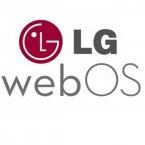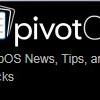Enyo Guides
-
Similar Topics
-
By Cho Chi
I've downloaded WebOS SDK with LG emulator for VirtualBox (
link hidden, please login to view) and trying to run default enyo project in it (). The native project works fine, but enyo project works fine only in browser. Enyo project gives me black screen in LG emulator. Can you help me to start it on WebOS emulator ? -
By pivotCE
link hidden, please login to view is the javascript frame work used by webOS developers to create applications for both the legacy OS, and LG’s TV OS. Those following along will recall that the development team had moved onto a new version based on and that this had potential .
The Enyo team have just . What we know is that with LG’s TV arm as their main customer, the focus remains on TV sized apps. Though increased support for mobile is planned, it is currently limited. Also, the framework will have a new name when publicly released.
This next generation of Enyo will be of interest to those currently building apps with the platform, but may also attract developers already experienced with ReactJS.
For those engaging with this testing phase, we’d be interested in any comments. The webOS Ports team will no doubt also be interested in any too. You can comment at .
Related posts:
-
By Alex
HP's announcement:
HP also announced it is releasing version 2.0 of webOS’s innovative developer tool, Enyo. Enyo 2.0 enables developers to write a single application that works across mobile devices and desktop web browsers, from the webOS, iOS and Android platforms to the Internet Explorer and Firefox browsers – and more. The source code for Enyo is available today, giving the open source community immediate access to the acclaimed application framework for webOS.
-
By News Reporter
Back in December the
link hidden, please login to view team to bring a number of popular and vital webOS homebrew utilities up to . Things have been pretty quiet on that front in the intervening month, but last night WebOS Ports developer took to Twitter to share screenshots of the progress they've made since. In short, it's Preware, but built with Enyo. It installs homebrew apps from the webOS Nation Homebrew Gallery and WebOS Internals' own feeds, just as you'd expect. The difference is that by being built with Enyo 2 the app now has a more flexible layout. Typical of the Enyo user interface is the display of multiple columns, with a list of apps on the left side and the selected app's info on the right.
Overall it looks to operate in a similar manner to the Preware we know and love, though Palmer did note that right now Preware 2 will only support Enyo apps on Open webOS installs, as or . That's not to say that Preware 2 can't support PDK-based apps, an IPK is an IPK is an IPK, after all, and older version sof webOS will support PDK and hybrid app installs just fine. Prompted by former webOS developer relations employee , Palmer pondered that in Preware 2, conceivably enabling a user to continue browsing apps while installing apps. Consider that more a possibility for future releases, .
Thanks to its Enyo 2-based status, installation of Preware 2 on varying webOS hardware shouldn't be an issue. Even on older webOS smartphones, the Enyo 2 framework can be packaged with the app at a size under 25KB while still giving cross-platform compatibility and speed. For his part, Palmer's screenshots were taken on a TouchPad running webOS 3.x.
Preware 2 is still in pre-alpha stages and not publicly released, though once they're far enough along the app will be released into . When that will happen… well, WebOS Ports is very clear on their ETA policy: - when it's ready, it's ready. So hold on, check out the screenshots after the break, and dream of someday going all Enyo for your homebrew fun.
-
-
By News Reporter
The platform-agnostic Enyo application framework is expanding its reach, adding support for Internet Explorer 10 touch events and
link hidden, please login to view. IE 10 itself is a multi-platform browser, operating on , /, and Windows 7. Enyo has from the start been able to handle both touch and mouse pointer events across every platform it supports (of which there are many), but with the update to 2.1.1, Enyo apps can take advantage of IE 10's new Pointer Event API. HP's Enyo team has also been working on implementing support for deploying your Enyo-based apps into the Windows Store on Windows 8, as well as watching the progress of PhoneGap has made towards support of Windows Phone 8. The 2.1.1 update also improves support for the Kindle Fire HD, having successfully "ironed out" a few "quirks" introduced by the new version of Amazon's Silk browser on the new tablet. As such, The Kindle Fire HD and IE 10 have joined for Enyo 2.x, joining Chrome, Safari, Firefox, IE9 and 8, Android 2.3 and 4.x, iOS 5 and 6, and Open webOS.
The update for Enyo 2.1.1 is relatively minor (unless you're really into developing apps for Windows 8), but Enyo 2.2 is around the corner with a more substantial update: an optional MVC library. In the coming week or so, the Enyo team plans on inviting developers to check out a preview release for Enyo 2.2, so if you're interested you're being advised to "keep your eye on the [Enyo] forums and the enyo-dev mailing list" for the relevant details.
-
-
Similar Tagged Content



Recommended Posts
Join the conversation
You can post now and register later. If you have an account, sign in now to post with your account.
Note: Your post will require moderator approval before it will be visible.